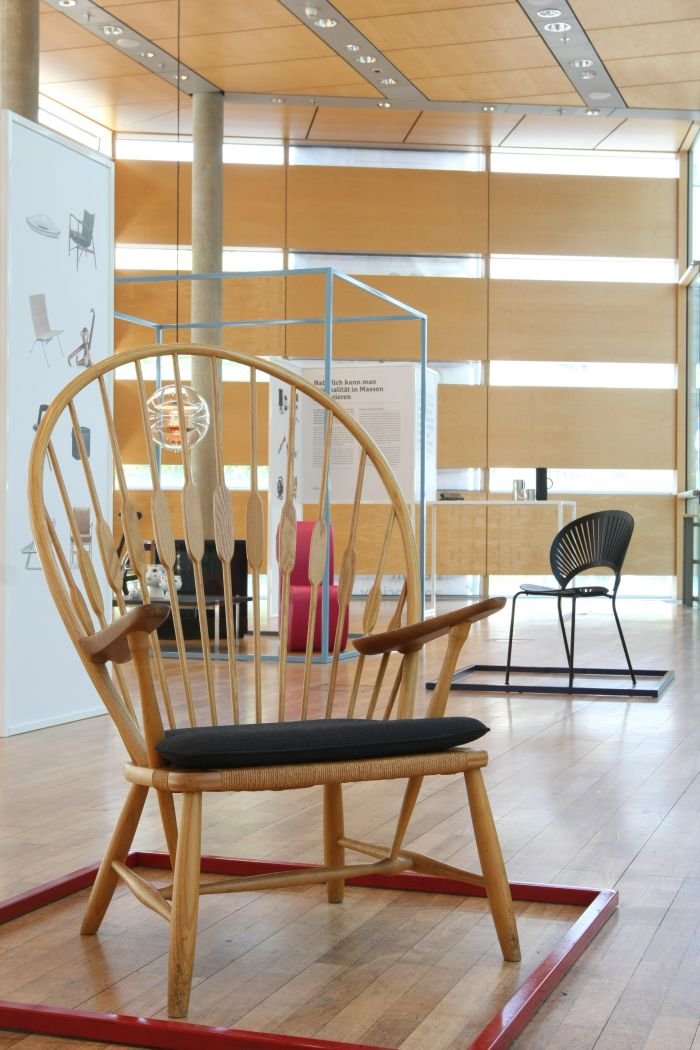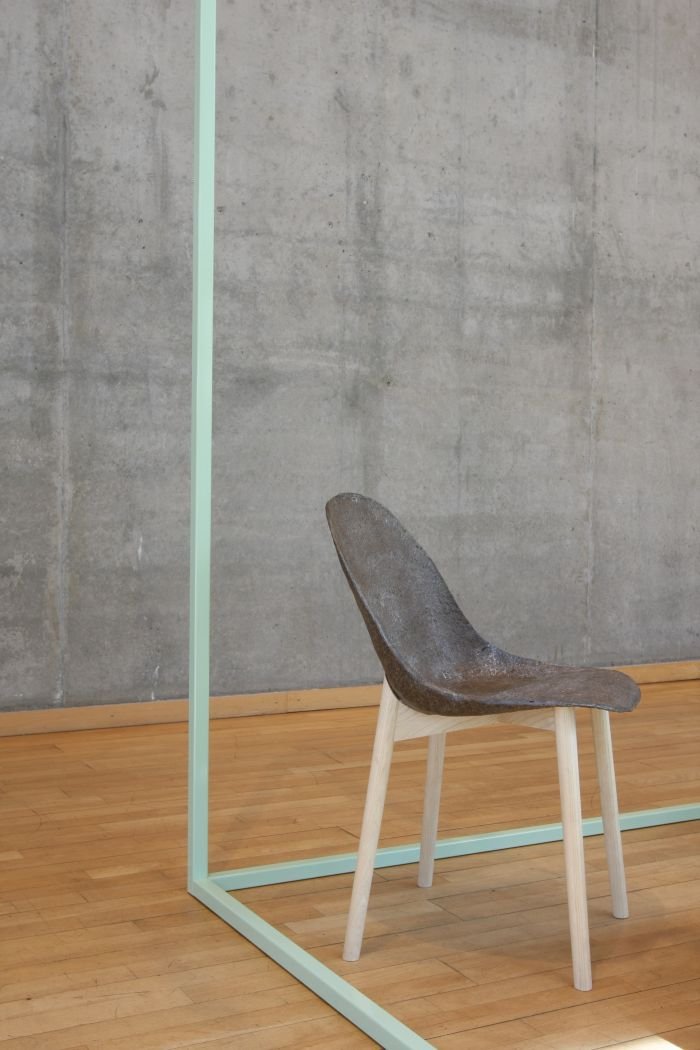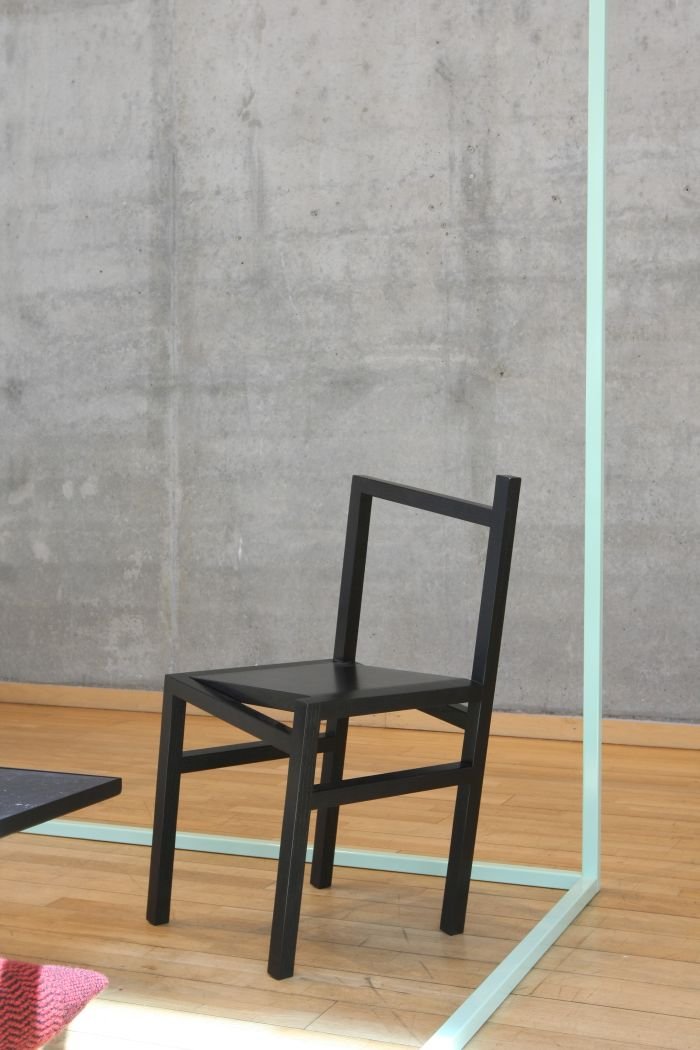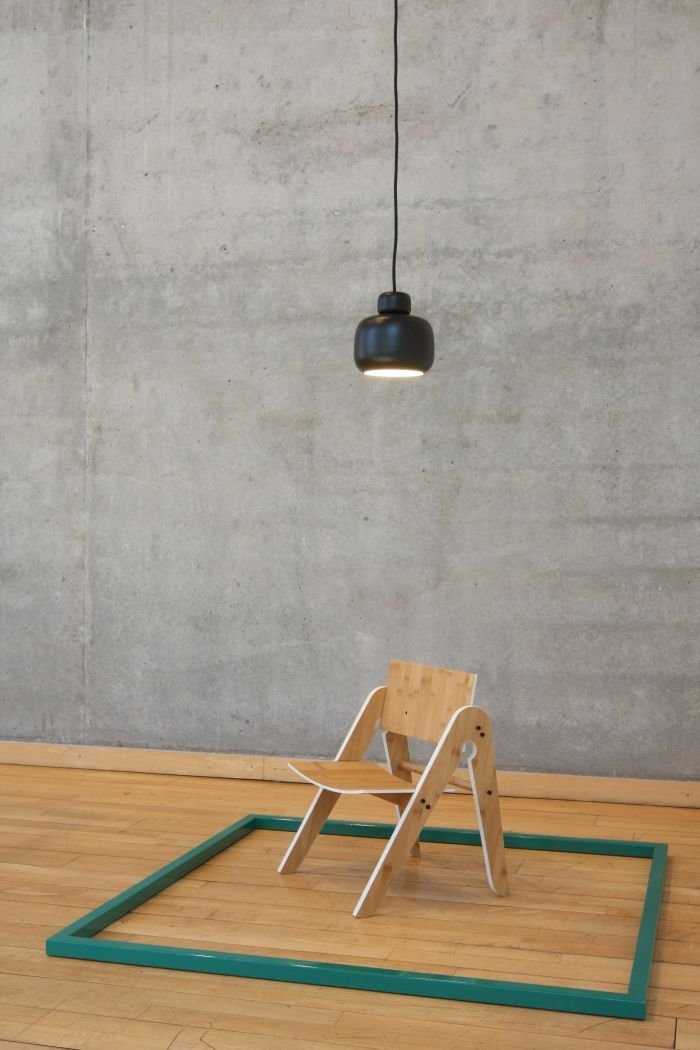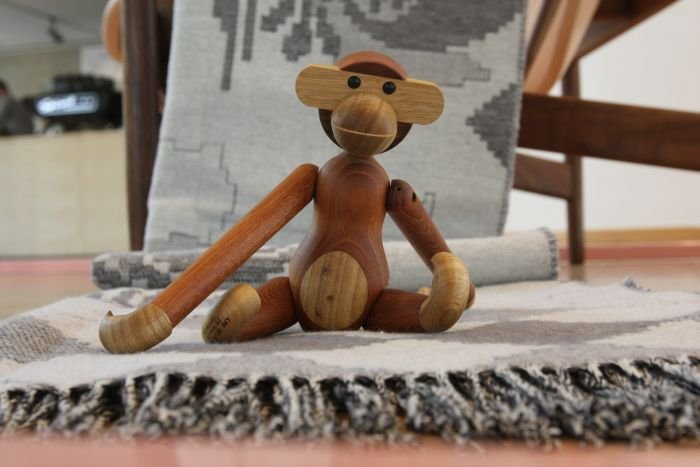The exhibition Much More Than One Good Chair. Design & Society in Denmark at Felleshus Berlin explores the development of Danish design, and by extrapolation Danish society, since the end of the Second World War.
To find out a little more we spoke to the exhibition's curator, the Danish designer and author Thomas Dickson.
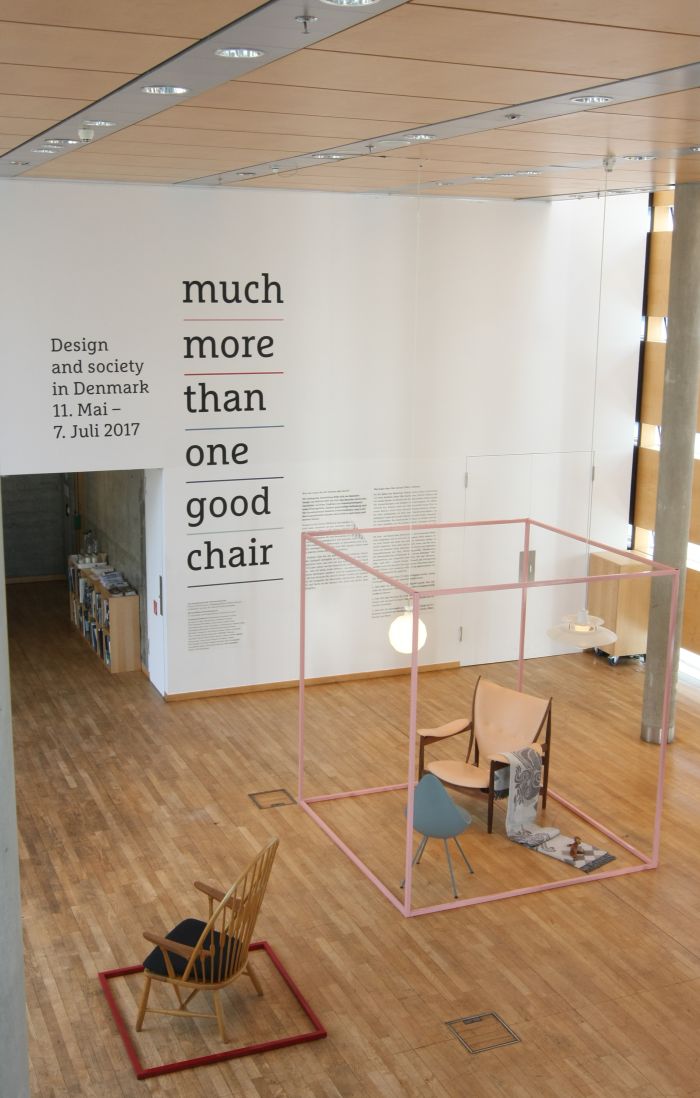
A graduate of both the Royal Academy of Fine Arts Copenhagen and the Danish School of Journalism Aarhus, Thomas Dickson's career is very much defined by design as practice and design as theory.
Currently running his own design consultancy in Copenhagen, Thomas Dickson has previously served as an Associate Professor at the Centre for Design Research at Aarhus School of Architecture, advised LEGO on the development of their research unit, and held a range of editorial positions with Danish architecture and design publications. While as a journalist in his own right, Thomas Dickson is the author of the book Dansk design, a comprehensive exploration of Danish craft and design from its origins until today.
Approached by the Danish Embassy in Berlin to create an exhibition which explores how Danish design has developed since 1945, and asks where is it currently at, Thomas Dickson has realised with Much More Than One Good Chair an exhibition concept which presents Danish design beyond the normal, accepted, images and which thus allows for a more open understanding of Danish design.
To learn a little more we spoke with Thomas Dickson about the one good, wooden, chair as the symbol of Danish design, the history, and the current health, of design in Denmark, but began, as ever by asking, how he arrived at design.....?
Thomas Dickson: After leaving school I worked as a printer, through that became interested in graphic design and enrolled to study graphic design at the Royal Academy in Copenhagen. The structure of the course however meant I had to study architecture for two years, before I could specialise in graphic design; and by the time I arrived at the design department my interest had shifted from the 2D to the 3D, and for all the utility and innovation of industrial design. In addition, having come from the printing industry, and being used to using the latest technology, I found the way graphic design was taught at the Royal Academy back then a little dated, it felt a little like I was going backwards. Whereas industrial design was much more progressive.
smow Blog: Much More Than One Good Chair looks at design in Denmark since 1945, going a little further backwards, how did design in Denmark develop, from when can one speak of "design"?
Thomas Dickson: As with other countries, the 19th century saw the rise of the applied arts, mostly through the Jugendstil, a movement which had its own interpretation and form in Denmark, before around 1910 the first architects started cooperating formally with companies and municipalities, much in the same way as Peter Behrens cooperated with AEG in Germany, creating street furniture, gas burners, lighting, trams. Then, and moving on a little, in 1924 the Furniture School at the Royal Academy in Copenhagen was established with Kaare Klint as its Director, originally it was called the "School of Furniture and Space" because being an architecture school they didn't just look at furniture, but the whole room and how to furnish spaces. And at around the same time, Poul Henningsen was developing his first lamp designs, and so that period could be considered when industrial, product, design really started as a profession in Denmark.
smow Blog: And was that then a straight progression from the applied arts tradition, or....
Thomas Dickson: Not necessarily, while Kaare Klint, for example, was very traditional in his thinking, was essentially an old-fashioned architect who loved to see his furniture made in mahogany, Poul Henningsen was much more radical in his approach to art, and very much a proponent of new materials and industrial production.
smow Blog: The popular image of Danish design remains however crafted wooden furniture, for all the crafted wooden chair. How did we arrive at such an image?
Thomas Dickson: In 1927 the Copenhagen Cabinet Makers Guild inaugurated an annual exhibition where their members displayed their newest works, an exhibition that was largely a reaction to the rise of industrial production and the development of small furniture factories which they saw as a threat. In context of these exhibitions the cabinet makers began cooperating with architects and furniture designers to improve the form of their furniture, to move away from more traditional forms and realise much more contemporary furniture. As a result the annual Copenhagen exhibition became one of the major showcases for contemporary Danish furniture design, attracted a lot of attention, also international, and helped establish Danish designers and Danish furniture design. By the late 1960s however the competition from industry had become very hard and meant that a lot of the cabinet maker workshops had closed down.
smow Blog: But can one therefore talk of an active decision to concentrate on wooden furniture, or why did the Cabinet Makers Guild exhibition maintain such an important role for so long?
Thomas Dickson: In a 1983 Philadelphia exhibition catalogue Hans J. Wegner wrote that it was their great advantage that Danish industry had been lagging so far behind European industry, as it meant rather than all the possibilities available elsewhere in Europe, in Denmark they only had their tools and their wood, and had to try to get the best out of them. And that despite the perceived threat, industry in Denmark was in no position to realistically challenge the wood workshops. If we think for example of Bauhaus with its chrome plated steel and black leather, Danish designers at that time didn't have access to companies who could produce furniture like that, there simply wasn't the hard currency to buy the necessary machines and materials.
smow Blog: So the reason Danish modernism is considered more humane than say Bauhaus is purely because of prevailing conditions?
Thomas Dickson: In a way, but in addition I think there was also a different spirit. For me the main difference between Bauhaus and the core of Danish modernism is that Bauhaus took the position that you start with a clean slate, they ignored historical developments and tradition, there were for example, no art history classes at Bauhaus, instead they developed something completely new, something industry could produce on a mass scale. In contrast the likes of Kaare Klint would take classic items of furniture, often historical British or Shaker furniture, and reinterpret them, whereby the Danish designers never moved radically from the object they were studying, but rather saw themselves as part of a tradition and that they were modernising that tradition. So not a revolution but an evolution.
smow Blog: Presumably however an evolution which over the course of time new technology did begin to influence.....
Thomas Dickson: Certainly. Whereas Kaare Klint never moved that far from his mahogany, the likes of Arne Jacobsen or Verner Panton fully embraced the new technological possibilities, and for all the new synthetic materials that became increasingly available, and took furniture design in new directions. While in the course of the late 1950s wider industry starts coming increasingly into the picture, firms likes LEGO, Bang & Olufsen or Vola, so companies who were producing new types of goods and who helped move ideas of Danish design away from purely furniture.
smow Blog: The first section of the exhibition ends in 1968, which is very specific. We take that to mean that for you 1968 marks a fundamental moment in Danish design?
Thomas Dickson: In 1967 Verner Panton releases his plastic chair, then in 1968 the Carpenters Guild exhibition is held for the last time and IKEA arrive in Denmark! In addition it was also a time of Pop art, colour, the arrival of plastics, while the whole hippy movement started to alter ideas of living and how interiors function. And so 1968 wasn't just a revolution in Paris, it also brought a lot of changes to Danish society. And a lot of the chairs now considered classics of Danish design went out of fashion in the late 1960s, and remained out of fashion until they were "rediscovered" or "re-appreciated" some 15-20 years ago by a new generation.
smow Blog: Which raises the question how popular was Danish furniture of the 1940s and 50s, was it furniture Danes actually bought?
Thomas Dickson: Very much so. On the one hand, the works being produced by the cabinet makers were popular amongst slightly more affluent, artistic, culturally interested individuals who wanted something contemporary, something new. But then there was also the Coop movement, the FDB, who were producing inexpensive contemporary furniture by the likes of Børge Mogensen or Poul Volther, and a lot of that wasn't bought by, let’s say, traditional Coop members but by young urban professionals who couldn't afford the Hans Wegner, Finn Juhl or Arne Jacobsen furniture.
smow Blog: You mentioned the Panton Chair, a chair which is very much symbolic of the evolution of furniture design. Is however the Panton Chair for you a Danish chair, or is it something more international?
Thomas Dickson: I'd call it a Danish chair; amongst other reasons because Panton wasn't the only one working on such a model, at around the same time Poul Kjaerholm made a papier-mâché model of a chair which is almost identical. And so something was in the air. The reason Panton went abroad with his design was that he couldn't find a company in Denmark brave enough to put such a design on the market, and even if they wanted to, at that time they didn't have the technology to produce such a radical concept. Even Vitra with the aid of Bayer's expertise in plastics required several years of development and experimentation before they had a stable, durable version.
smow Blog: Much More Than One Good Chair ends with contemporary Danish design, how healthy do you consider Danish design today, is it in a good place?
Thomas Dickson: I think it could be better. I think we ought to take those values which created the Danish design tradition, study them more carefully and use them to try to find solutions appropriate for our current age. At the moment there is a lot of copying of classics and I don't think we're as innovative as we believe we are. In particular there are currently a lot of lifestyle companies in Denmark who are searching for old models they can put back into production, because they want to tap into the tradition, this story telling about Danish design as it once was. I think we should try instead to develop something that breaks away from the old models.
smow Blog: As the designers of previous decades did?
Thomas Dickson: Exactly. We are living different lives today than we were living in the 40s, 50s or 60s and I believe that requires new types of furniture, new styles of living and new ways of furnishing homes. If one considers, for example, that because of the increasing price of real estate homes are getting smaller, that challenges traditional furniture and means we need to come up with new solutions. We need to reinvent Bauhaus and Danish modernism, isn't it time for history to change once more?
More information on Thomas Dickson can be found at http://dicksondesign.dk/. Dansk design is published, in Danish and English, by Gyldendal
The exhibition More Than Just One Good Chair runs at Felleshus/Nordic Embassies Cultural Centre, Rauchstraße 1, 10787 Berlin until Friday July 7th
